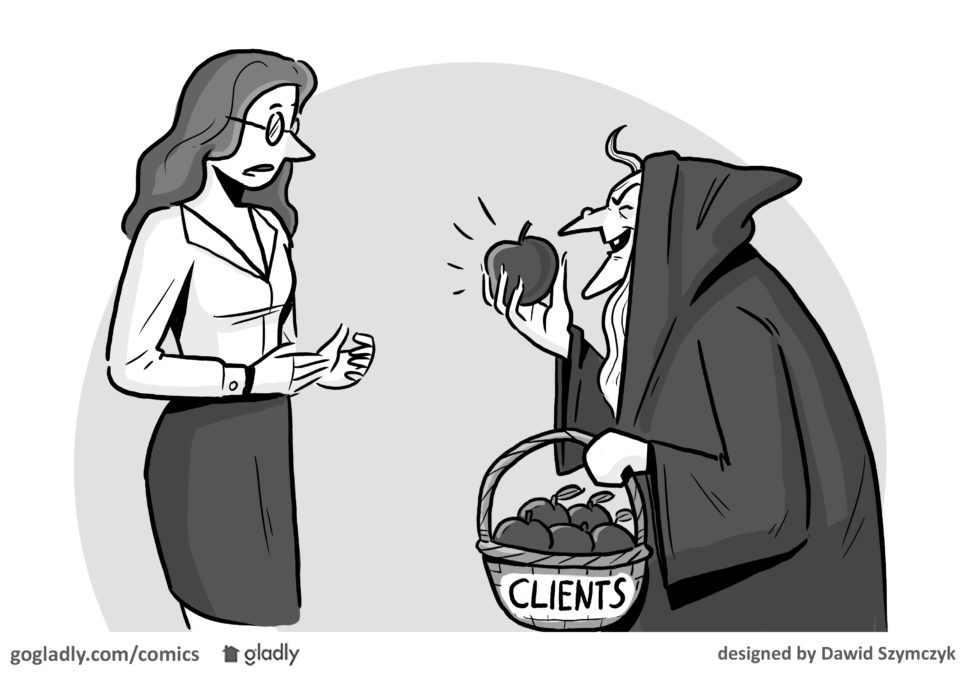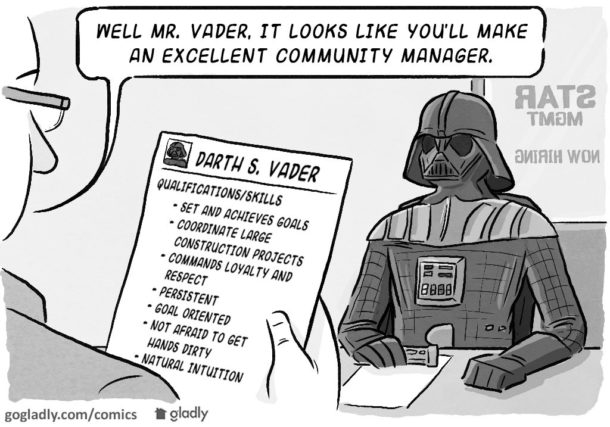Every company needs clients. Without clients, well, you don’t have a business. But is the customer always right? Most of the time yes, but there are times when the best course of action is to “kick the bums out”! Yes, I said it! Even if they are profitable!
You know who I’m talking about — Clients that take up an inordinate amount of your time. Ones that always complain about costs. The ones that treat you and your staff without respect. Especially the ones that generate the least amount of revenue. Here are just some of the reasons to show the door to abusive clients:
- Burn out your staff that can lead to turnover and training/productivity costs
- Suck up time and resources that could be better used helping your good customers
- Poison your staff’s attitude towards their job.
- Ruin your day…every day.
In order to protect your staff, improve your bottom line, and strengthen your competitive position in the market I recommend you take these unprofitable, resource hogging, disruptive customers and SEND THEM TO YOUR COMPETITION!!! Yep, give them to your key competitors to suck up their time and resources, burn out their staff, take time away from their best customers so they are ripe for you!
If you don’t have a realistic plan on how to handle poisonous and/or unprofitable clients you may find that after doing all your best, you end up with an unhappy team and a portfolio of these people that you work harder and harder to please yet have less and less profit to show for it.
- PoisonousClients - March 3, 2016



 Help
Help
You hit the nail on the head
I have had the opportunity to work FOR such a group
Not once but twice
You cannot work with these associations
Thank you for putting it out there
Thanks for the comment. I’m sorry you left the industry! It’s definitely not for the faint of heart.
I continue to be amazed at how badly some board members and homeowners treat their community managers. Whenever I witness unprofessional behavior I ask myself the question, “Does this person act this way at their day-time job?” Surely Not (I hope).
I understand homeowner and board frustration when something falls through the cracks, but yelling and demeaning someone is not an effective way to change human behavior.
As a board, you have to set clear, realistic, and measurable tasks to your community manager, and then let them meet your expectations, or fail, and be fired. But don’t yell, scream, threaten your community manager; that is unprofessional.
Setting expectations is an important part of being a board member.
Delivery on those expectations is the responsibility of the community manager.
NOTE: Both the Board and the Community Manager must agree to the set of expectations, delivery dates, etc. Both parties must clearly understand what is expected, and what is agreed to.
Put everything in WRITING, and then be accountable —
Hi Victoria,
It’s sad but true that managers are often viewed as worthy of poor treatment. Awful, but it’s not that unusual. Having been on both sides (as a manager and a homeowner) I can see that it’s surprisingly easy to come to a wrong conclusion with a few facts but without the entire picture.
I agree setting clear expectations upfront is critical.
Every portfolio manager should be able to appeal to upper management when an account becomes impossible. Upper management must weigh the revenue generated by the account in question against the burn out factors of a portfolio manager. The most precious asset of any company is the staff members and their energy. Often portfolio managers and supporting staff get stuck with a bad client with no relief. The cost to replace a good staff member should be the balance upper management takes into consideration in dealing with a bad client.
I never fire a client. I sit them down and at the pace they are going, I ask for a substancial increase in fees due to their inshable demands. That puts the elephant in the room on the table. In some cases they choose not to renew under the new terms or increased fee structure. That is fine and we part company. I have converted bad clients to more reasonable clients employing this method. If their focus is saving the members money, then abiding to the term of the management contract in place is a good step in that direction. If they are asking for time and services along with attention above the existing contract terms, the price goes up.
If they wish for us to manage, the price is $20.00 per door per month. If they wish to watch over our every step the fee goes to $25.00 per door per month. If they wish to help the price goes to $30.00 per door per month, their choice. Using this as your guide, I find that the bad customer will get the message and a few can be salvaged. Much better than just letting a client go. Well worth the time and energy, opposed to drama of gaining a new account.
A bad client is usually one or two Board members that cause the grief. They come and go and sometimes weathering the storm is the best practice. If that is the case, the the portfolio manager and staff need support and help to weather the storm if that is the course of action. This must now be closely monitored and the upper management must be involved. A time frame set and if the situation does not improve the elephant meeting takes place.
I have found over the years the portfolio is always 20% great clients, 60% middle of the road and 20% problematic. We spend 35% of our time on the 20% of problematic clients. Reducing the later two numbers are our daily quest. The problematic client is a daily chore that nerve seem to go away.
I am the CEO of our company and celebrating my 50th year in the industry. I am dealing with a problematic client as we speak and about to go into a elephant meeting. Your success with be your ability to deal with a problematic client and convert them to something better, or show them the door. The clients are all non profit corporations, but management companies demand profit to stay in business.
Love your approach! Don’t fire them outright. Just let them know that they’re creating more cost for your business and that their fee will be increased respectively. Fantastic! Thanks, Bill.
Sterling,
About 15years ago I attended a CAI conferance and the subject was Bad Clients. The message was to sort out your portfolio and Fire those that were not performing. A year later that approach was retracted and some management suffered financially from following that lead. In short, that is the cowards way out. Afraid to confront the issue and just bail out.
There are two parties to the deal, like a marriage. If there is tension in the household, you deal with in in a true effort to save the marriage. Possibly you may need to make some changes yourself, recognizing you too may not be perfect.
As I mentioned earlier, I would rather confront the issue with a proposed fee increase based on the work load, moral and undermining the origination if that client is to remain. Not wanting a fee increase, or get dumped, they will usually simmer down and hopefully listen.
There are three components to every deal, Quality, Timing, and Cost. If they want Quality , I get Timing and I set the Cost. If they want to control the Cost, I get to control the Quality and Timing.
If they want Timing, I set the Cost and Quality.
A bad client usually wants to control all three components and you loose on all fronts.
Excellent!
As a volunteer Board member to any non profit corporation, you only have power from the time the gavel goes down to commence the meeting until it is adjourned. During that meeting you have one vote to offer on issues that come before the corporation. Prior to and following the meeting you have NO power, and you can not become rogue.
If you sit on the Board of a Hospital and following a Board meeting you go down to the emergency room and start moving stuff around, or directing staff, you are rogue and have no Business there.
Way too often the volunteer board members make their way to the emergency room and get their nose in something the have in business, experiance or authority to be there. If no one call them out, they will continue this bad practice, someone could loose their life.
The management team should call this bad practice out to the Board and get the rogue Board member back up in the Board Room.
I think you follow my drift, and using it in your practice will go a long way in paving your success.
Really enjoyed your comments, thank you. I’ve been there as a manager but unfortunately the company I worked for at one time only cared about the income and retaining the accounts without consideration to the individual manager. Need I say there were no elephants in their world. As the years passed I became a stronger manager and worked for better companies that realized they need to keep an elephant on retainer and have that meeting.
Hi Barby,
I’m glad you work for a better company today. The best association management firms can afford to be choosy with who they work for and to insist upon certain basic things.